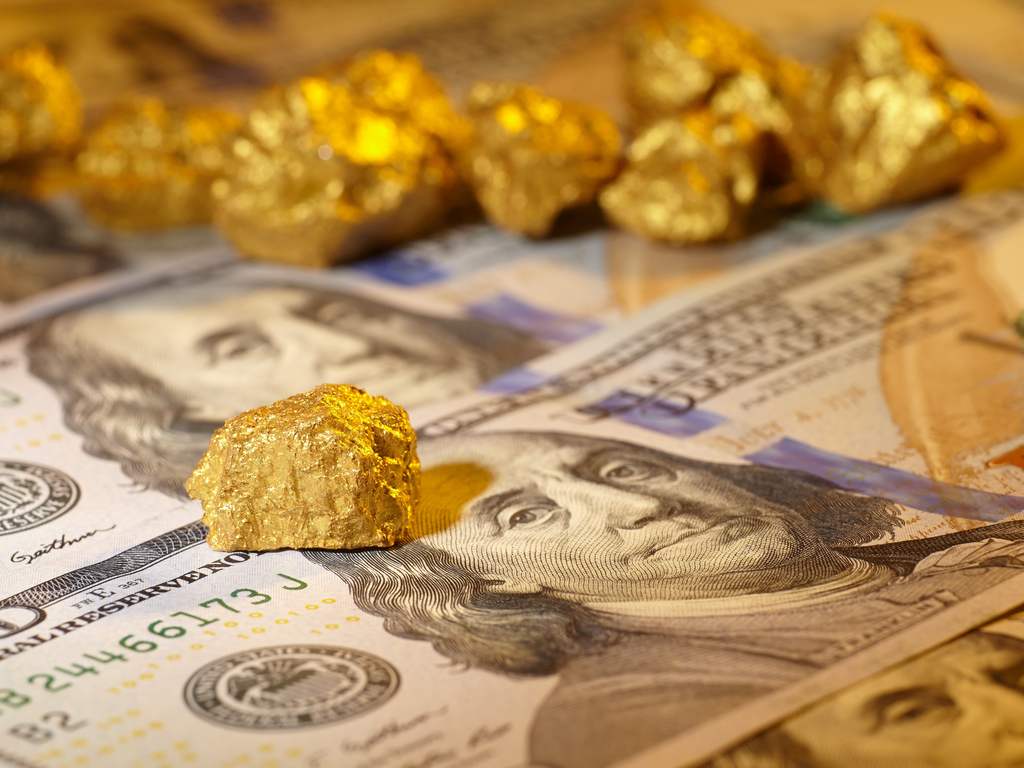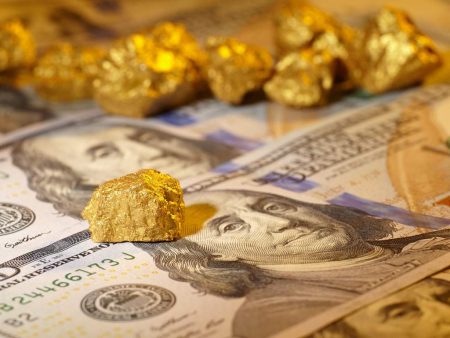
– Investors reposition after sharp stock losses
Lagos — Gold continues to decline today, heading towards its lowest levels in nearly 20 days, reaching $2,860 per ounce in spot trading.
Gold’s losses coincided with a recovery in the dollar, supported by escalating trade tensions between the United States on the one hand, and China, Canada and Mexico on the other hand. The sharp losses in the US stock market yesterday may also played a role in forcing traders to liquidate their positions in other assets to cover their positions.
We also witnessed that the momentum of money flowing into physical gold funds on Wall Street is running out of steam after the huge inflows in recent days and turning backward, which contributed to fueling the downward pressure on the yellow metal.
Between February 18 and 25, the largest gold ETFs, SPDR Gold Trust (GLD) and iShares Gold Trust (IAU), recorded a total of nearly $5 billion in inflows before reversing to outflows of nearly $160 million in the past two sessions.
On trade war front, Trump has backed off from postponing tariffs on Canada and Mexico until early April and will impose an additional 10% tariff on Chinese imports. If the tariffs actually go into effect, Trump will be closer to implement his previous threats. In addition, Trump may increase pressure on China to extract concessions, which could threaten to escalate the trade war, according to The New York Times.
This escalation has mixed effects on gold. On the one hand, concerns about increasing inflationary pressures with the imposition of tariffs could lead to a strengthening of the dollar – this is what we have been witnessing since Wednesday – and it is the same that has been driving its gains during the last three months of last year. On the other hand, economic uncertainty in the United States and the world may ensure that gold can resume its upward trend again.
In addition to the uncertainty flowing from the trade escalation, fears of job losses among federal employees and contractors in the United States may weigh on consumer sentiment and may push them to reduce their spending, according to a report from Apollo Global Management. Although the report also emphasized the bullish sentiment towards the US economy, it mentioned the need to monitor upcoming data carefully for signs of a reversal in the business cycle.
Recent surveys, whether from The Conference Board Consumer Confidence ndex or the Purchasing Managers Index from S&P Global, reflect a noticeable decline in sentiment, whether for individuals or businesses this month.
These recent signs of weakness in the US economy have strengthened the hypothesis of a half-point Federal Reserve interest rate cut before the end of this year, which may keep gold able to resume the upward trend.
According to the CME FedWatch Tool, the probability that the Fed will reduce the current range by 25 basis points is more than 53% in June, and there is a 75% chance that the December meeting will end and we will have witnessed at least one cut after the expected cut in June.
While today’s PCE figures could help markets build on expectations about the path of monetary policy for the rest of the year, a stronger-than-expected reading, especially in the core reading, could give the dollar more strength, which could put more pressure on gold to give up its gains.
Geopolitics could play a negative role for gold today, with Donald Trump talking about the imminent completion of a minerals deal with Ukraine, which could be signed today with President Volodymyr Zelensky’s visit to Washington. While signing this agreement could put the US in a more committed position to seek a ceasefire rather than the provocative escalation we have seen in the past, this would give some comfort to the markets in my opinion.
On the other hand, there is still no guarantee that a ceasefire agreement will be reached, and even if it is reached, there are still no guarantees that it will last, which could help keep the geopolitical tension premium in the markets. Trump said he has “confidence” that the deal will hold if reached and said he would provide security guarantees, but the minerals deal does not contain explicit provisions to guarantee security in Ukraine, according to The Wall Street Journal.
*Samer Hasn, Senior Market Analyst at XS.com



